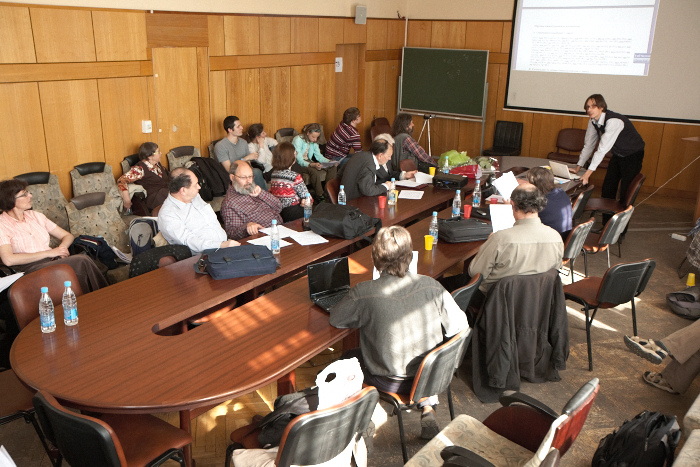|
Arctic Loon
The black-throated loon (''Gavia arctica''), also known as the Arctic loon and the black-throated diver, is a migratory aquatic bird found in the northern hemisphere, primarily breeding in freshwater lakes in northern Europe and Asia. It winters along sheltered, ice-free coasts of the north-east Atlantic Ocean and the eastern and western Pacific Ocean. This loon was first described by Carl Linnaeus in 1758. It has two subspecies. It was previously considered to be the same species as the Pacific loon, of which it is traditionally considered to be a sister species, although this is debated. In a study that used mitochondrial and nuclear intron DNA, the black-throated loon was found to be sister to a clade consisting of the Pacific loon and two sister species, the common loon and the yellow-billed loon. The black-throated loon measures about in length and can weigh anywhere from . In breeding plumage, the adult of the nominate subspecies has mostly black upperparts, with the ex ... [...More Info...] [...Related Items...] OR: [Wikipedia] [Google] [Baidu] |
Carl Linnaeus
Carl Linnaeus (; 23 May 1707 – 10 January 1778), also known after his ennoblement in 1761 as Carl von Linné Blunt (2004), p. 171. (), was a Swedish botanist, zoologist, taxonomist, and physician who formalised binomial nomenclature, the modern system of naming organisms. He is known as the "father of modern taxonomy". Many of his writings were in Latin; his name is rendered in Latin as and, after his 1761 ennoblement, as . Linnaeus was born in Råshult, the countryside of Småland, in southern Sweden. He received most of his higher education at Uppsala University and began giving lectures in botany there in 1730. He lived abroad between 1735 and 1738, where he studied and also published the first edition of his ' in the Netherlands. He then returned to Sweden where he became professor of medicine and botany at Uppsala. In the 1740s, he was sent on several journeys through Sweden to find and classify plants and animals. In the 1750s and 1760s, he continued to collect an ... [...More Info...] [...Related Items...] OR: [Wikipedia] [Google] [Baidu] |
Palearctic
The Palearctic or Palaearctic is the largest of the eight biogeographic realms of the Earth. It stretches across all of Eurasia north of the foothills of the Himalayas, and North Africa. The realm consists of several bioregions: the Euro-Siberian region; the Mediterranean Basin; the Sahara and Arabian Deserts; and Western, Central and East Asia. The Palaearctic realm also has numerous rivers and lakes, forming several freshwater ecoregions. The term 'Palearctic' was first used in the 19th century, and is still in use as the basis for zoogeographic classification. History In an 1858 paper for the ''Proceedings of the Linnean Society'', British zoologist Philip Sclater first identified six terrestrial zoogeographic realms of the world: Palaearctic, Aethiopian/Afrotropic, Indian/Indomalayan, Australasian, Nearctic, and Neotropical. The six indicated general groupings of fauna, based on shared biogeography and large-scale geographic barriers to migration. Alfred Wallace a ... [...More Info...] [...Related Items...] OR: [Wikipedia] [Google] [Baidu] |
Nominate Subspecies
In biological classification, subspecies is a rank below species, used for populations that live in different areas and vary in size, shape, or other physical characteristics (morphology), but that can successfully interbreed. Not all species have subspecies, but for those that do there must be at least two. Subspecies is abbreviated subsp. or ssp. and the singular and plural forms are the same ("the subspecies is" or "the subspecies are"). In zoology, under the International Code of Zoological Nomenclature, the subspecies is the only taxonomic rank below that of species that can receive a name. In botany and mycology, under the International Code of Nomenclature for algae, fungi, and plants, other infraspecific ranks, such as variety, may be named. In bacteriology and virology, under standard bacterial nomenclature and virus nomenclature, there are recommendations but not strict requirements for recognizing other important infraspecific ranks. A taxonomist decides whether ... [...More Info...] [...Related Items...] OR: [Wikipedia] [Google] [Baidu] |
Northern Michigan University
Northern Michigan University (Northern Michigan, Northern or NMU) is a public university in Marquette, Michigan. It was established in 1899 by the Michigan Legislature as Northern State Normal School. In 1963, the state designated Northern a university and gave the school its current name of Northern Michigan University. The university comprises five academic divisions, offering some 180 programs at the undergraduate and graduate levels. Accredited undergraduate and graduate degree programs are offered by the College of Arts and Sciences, the College of Business, the College of Health Sciences and Professional Studies. NMU's athletic teams are nicknamed the Wildcats and compete primarily in the NCAA Division II Great Lakes Intercollegiate Athletic Conference (GLIAC). The hockey team competes in NCAA Division I Central Collegiate Hockey Association. The Nordic ski team competes in the NCAA Central Collegiate Ski Association. History Northern Michigan University was established i ... [...More Info...] [...Related Items...] OR: [Wikipedia] [Google] [Baidu] |
Master Of Science
A Master of Science ( la, Magisterii Scientiae; abbreviated MS, M.S., MSc, M.Sc., SM, S.M., ScM or Sc.M.) is a master's degree in the field of science awarded by universities in many countries or a person holding such a degree. In contrast to the Master of Arts degree, the Master of Science degree is typically granted for studies in sciences, engineering and medicine and is usually for programs that are more focused on scientific and mathematical subjects; however, different universities have different conventions and may also offer the degree for fields typically considered within the humanities and social sciences. While it ultimately depends upon the specific program, earning a Master of Science degree typically includes writing a thesis. The Master of Science degree was first introduced at the University of Michigan in 1858. One of the first recipients of the degree was De Volson Wood, who was conferred a Master of Science degree at the University of Michigan in 1859. Al ... [...More Info...] [...Related Items...] OR: [Wikipedia] [Google] [Baidu] |
Incomplete Lineage Sorting
Incomplete lineage sorting, also termed hemiplasy, deep coalescence, retention of ancestral polymorphism, or trans-species polymorphism, describes a phenomenon in population genetics when ancestral gene copies fail to coalesce (looking backwards in time) into a common ancestral copy until deeper than previous speciation events. It is caused by lineage sorting of genetic polymorphisms that were retained across successive nodes in the species tree. In other words, the tree produced by a single gene differs from the population or species level tree, producing a discordant tree. Whatever the mechanism, the result is that a generated species level tree may differ depending on the selected genes used for assessment. This is in contrast to complete lineage sorting, where the tree produced by the gene is the same as the population or species level tree. Both are common results in phylogenetic analysis, although it depends on the gene, organism, and sampling technique. Concept The conce ... [...More Info...] [...Related Items...] OR: [Wikipedia] [Google] [Baidu] |
Lumpers And Splitters
Lumpers and splitters are opposing factions in any discipline that has to place individual examples into rigorously defined categories. The lumper–splitter problem occurs when there is the desire to create classifications and assign examples to them, for example schools of literature, biological taxa and so on. A "lumper" is a person who assigns examples broadly, assuming that differences are not as important as signature similarities. A "splitter" is one who makes precise definitions, and creates new categories to classify samples that differ in key ways. Origin of the terms The earliest known use of these terms was by Charles Darwin, in a letter to Joseph Dalton Hooker in 1857: ''It is good to have hair-splitters & lumpers''. They were introduced more widely by George G. Simpson in his 1945 work ''The Principles of Classification and a Classification of Mammals''. As he put it: A later use can be found in the title of a 1969 paper "On lumpers and splitters ..." by the ... [...More Info...] [...Related Items...] OR: [Wikipedia] [Google] [Baidu] |
Arthur Cleveland Bent
Arthur Cleveland Bent (November 25, 1866 – December 30, 1954) was an American ornithologist. He is notable for his encyclopedic 21-volume work, ''Life Histories of North American Birds'', published 1919-1968 and completed posthumously. Bent was brought up in Massachusetts, where he became interested in birds as a child. He was later successful in business and traveled throughout North America, acquiring an extensive knowledge of its avifauna. From 1901 he was contributing papers to ''The Auk'', the journal of the American Ornithologists' Union. Following a request from the Smithsonian Institution in 1910, Bent started work on the project that would dominate the rest of his life. Using his own experiences, the published literature, and contributions from hundreds of others, he put together what was at the time by far the most comprehensive repository of knowledge about the biology of the birds of North America. His accounts were published progressively in the ''United States Nat ... [...More Info...] [...Related Items...] OR: [Wikipedia] [Google] [Baidu] |
Jonathan Dwight
Jonathan Dwight V (1858–1929) was an American ornithologist. Life Jonathan Dwight was born December 8, 1858 in New York City. His father was civil engineer Jonathan Dwight (1831–1910), grandfather Jonathan Dwight (1799–1856), great grandfather Jonathan Dwight (1772–1840), and great-great grandfather also named Jonathan Dwight (1743–1831), all part of the large New England Dwight family. His mother was Julia Lawrence Hasbrouck. In 1861 the family moved to Madison, New Jersey. His family had a summer home in Tadoussac, Quebec, and his first paper was published in 1879 on the birds observed there. He graduated from Harvard University in 1880, and joined his father in railroad design. He enlisted in the New York National Guard in 1889. After serving in the ambulance corps, he developed an interest in medicine. In 1893 he entered the Columbia University College of Physicians and Surgeons. He worked for a while in a hospital and private practice, but over time devoted more ti ... [...More Info...] [...Related Items...] OR: [Wikipedia] [Google] [Baidu] |
Sakhalin
Sakhalin ( rus, Сахали́н, r=Sakhalín, p=səxɐˈlʲin; ja, 樺太 ''Karafuto''; zh, c=, p=Kùyèdǎo, s=库页岛, t=庫頁島; Manchu: ᠰᠠᡥᠠᠯᡳᠶᠠᠨ, ''Sahaliyan''; Orok: Бугата на̄, ''Bugata nā''; Nivkh: Yh-mif) is the largest island of Russia. It is north of the Japanese archipelago, and is administered as part of the Sakhalin Oblast. Sakhalin is situated in the Pacific Ocean, sandwiched between the Sea of Okhotsk to the east and the Sea of Japan to the west. It is located just off Khabarovsk Krai, and is north of Hokkaido in Japan. The island has a population of roughly 500,000, the majority of which are Russians. The indigenous peoples of the island are the Ainu, Oroks, and Nivkhs, who are now present in very small numbers. The Island's name is derived from the Manchu word ''Sahaliyan'' (ᠰᠠᡥᠠᠯᡳᠶᠠᠨ). Sakhalin was once part of China during the Qing dynasty, although Chinese control was relaxed at times. Sakhalin was l ... [...More Info...] [...Related Items...] OR: [Wikipedia] [Google] [Baidu] |
Kamchatka Peninsula
The Kamchatka Peninsula (russian: полуостров Камчатка, Poluostrov Kamchatka, ) is a peninsula in the Russian Far East, with an area of about . The Pacific Ocean and the Sea of Okhotsk make up the peninsula's eastern and western coastlines, respectively. Immediately offshore along the Pacific coast of the peninsula runs the Kuril–Kamchatka Trench. The Kamchatka Peninsula, the Commander Islands, and the Karaginsky Island, constitute the Kamchatka Krai of the Russia, Russian Federation. The vast majority of the 322,079 inhabitants are ethnic Russians, although about 13,000 are Koryaks (2014). More than half of the population lives in Petropavlovsk-Kamchatsky (179,526 in 2010) and nearby Yelizovo (38,980). The Kamchatka peninsula contains the volcanoes of Kamchatka, a World Heritage Site, UNESCO World Heritage Site. Geography Politically, the peninsula forms part of Kamchatka Krai. The southern tip is called Cape Lopatka. (Lopatka is Russian for s ... [...More Info...] [...Related Items...] OR: [Wikipedia] [Google] [Baidu] |








